Some years ago my sister got married in Florida, so my family and a lot of their friends flew out to America to attend the wedding. My brother-in-law’s stag do was a trip to a shooting range to see which of us proved the best shot blasting holes in targets some distance away.
Attached to the shooting range was a gun shop, which was doing a roaring trade. Listening to the sales assistants talk dispassionately (or to be more accurate, with manic enthusiasm) about the ammo, the firing action, rate and range, and the damage caused by each gun was one of the strangest and most chilling experiences I can remember. It was as if the customers were itching to fire deadly bullets in anyone or any thing coming near them, just for the hell of it – they wanted burglars so they could have an excuse to kill and maim!
Why should this be? I always took the view that we are all human and that our common bond of humanity should take precedence over the desire to murder in cold blood any of our fellow humans, even if their race, creed, colour, culture, occupation, lifestyle or outlook on life happen to be different to our own. We should be celebrating life, not procuring instruments of instant death. In fact, you wonder where we might be as a race if the effort and investment that went into making some of these extreme killing machines went into medical research, for example.
But all cultures have an ambiguous, not to say hypocritical attitude to firearms: they are justified as instruments of legalised fighting at war in killing people we designate as enemies; they are justified for the alleged pleasure of killing wild animals – some for food and many for the sheer hell of killing a living creature; murdering our fellow citizens is illegal, but the American courts will apply leniency if the other party is deemed to have threatened us or our property. In some other countries, people get shot but life goes on. Life can be very cheap, where some of us consider it far more precious than any gun.
The 2nd amendment of the American constitution, you will remember, gives all Americans a right to bear arms, something the vast majority do with huge enthusiasm. To be strictly accurate, it gives them rights to bear arms within an organised militia, this being ratified by Thomas Jefferson in 1791 at a time when the US had no armed police or army and had not long ended war with Britain:
A well regulated militia being necessary to the security of a free state, the right of the people to keep and bear arms shall not be infringed.
By definition, Americans who own guns therefore believe themselves to be part of a militia (maybe the NRA sees itself as such?), to distrust their government and to wish for the right to dispense their own summary justice on anyone they deem to be an intruder or to have done them harm. Eye for an eye – Old Testament justice. One thing I would say is that the countless instances of innocents being massacred that seem to occur with grim regularity in the US are not the product of a “well regulated” militia but individuals who legally carry guns going berserk. The ever-growing list is available here and here.
Guns are not employed to sit in a cupboard gathering dust, nor merely for hunting, as a deterrent, nor for any other logical purpose; they are collected by a sizeable proportion of the American population with the gung ho exuberance of a child with a toy gun. This is a total gun culture, a bunkered mentality reinforced by the paranoid pronouncements of far-right press and TV, in which a substantial proportion of the population believe they are constantly under threat and need to be armed to the teeth to protect and defend their loved ones, pre-emptively if necessary.
The NRA (see background here) solution to every problem is “more guns” rather than better thought. According to their president, good guys with guns will beat bad guys with guns – though can you tell the difference and are you sure the good guys always win, let alone being sure who are the good guys and that they won’t turn bad with the power of weapons in their hands? In movies maybe… not in real life. The right to carry guns openly means everyone is on edge, and escalation into full-scale shootings are all the more likely (you can see a rebuttal of the NRA’s most common arguments here.)
Prevention rather than cure is never on the agenda; registration documents and regulations are child’s play to circumvent for anybody with intent to misuse and abuse firearms – even people with a history of mental illness can get around them, not that that would pick up those most likely to play cowboy and use guns for bad purposes.
Not just handguns and pistols are held, but magnums, pump-action shotguns, semi-automatic and automatic assault rifles that can fire 30 rounds a minute, even full-scale machine guns. It’s worth reading something of the background to these circumstances, taken from the Wikipedia article:
Origins
Firearms became readily identifiable symbols of westward expansion.In a 1970 article titled America as a Gun Culture, the noted historian Richard Hofstadter used the phrase gun culture to describe America’s long-held affection for guns, embracing and celebrating the association of guns and America’s heritage.
According to political scientist Robert Spitzer, the American gun culture as it exists today is founded on three factors: the proliferation of firearms since the earliest days of the nation, the connection between personal ownership of weapons and the country’s revolutionary and frontier history, and the cultural mythology regarding the gun in the frontier and in modern life. Spitzer writes that:
- Two elements of the modern American gun culture have survived since the earliest days of the country; the hunting/sporting ethos and the militia/frontier ethos.
- The Hunting/Sporting ethos emerged when America was an agrarian nation in which hunting was a valuable source of supplying food for settlers, guns were a means of protection from animal predators, and the market for furs could provide a source of income. Acquiring shooting skills was connected with survival, and acquiring these skills was a “rite of passage” for boys entering manhood. The role of guns as marks of maturity persists to this day. Today, hunting survives as a central component of the gun culture.
- The Militia/Frontier ethos emerged from early Americans’ dependence on their wits and skill to protect themselves from hostile Native Americans and foreign armies. Survival depended upon everyone carrying a weapon (excluding blacks, and in a large part, women). In the late Eighteenth Century, there was neither the money nor manpower to maintain a full-time army; therefore the armed citizen soldier carried the responsibility of protecting his country. Service in militia, including providing your own ammunition and weapons, was mandatory for all adult males.
- Closely related to the militia tradition was the frontier tradition, with the westward movement closely associated with weaponry. In the Nineteenth Century, firearms were closely associated with the westward expansion. Outlaws and Indians necessitated an armed citizenry ready to defend themselves.
- Today, this veneration of firearms has left a deeply felt belief that guns are both an integral part of, and a force responsible for, America as it exists
Present-day gun culture in the United States
A shooter on an indoor rangeErik Luna, Associate Professor at the University of Utah College of Law, describes the differences between a “pro-gun culture” and an “anti-gun culture” in the United States and describes some traits of a “pro-gun culture” as follows:
- They share a belief that the Second Amendment to the United States Constitution enumerates an individual right, (as further elaborated by Justice Antonin Scalia of the SCOTUS). Generally they see people as trustworthy and believe that citizens should not be prevented from having guns unless they have done something to show that they are not to be trusted with them.
- They share a belief that guns provide some level of protection against criminality and tyranny. This ranges from a feeling that it is good to have a gun around the house for self-protection, to an active distrust of government and a belief that widespread gun ownership is protection against tyranny.
- They are generally responsible with respect to firearms handling. They have an awareness (or internalization) of either Jeff Cooper‘s Four Rules or the NRA‘s Three Rules providing for safe handling of guns and try to abide by them when handling firearms.
- They support, widely and in principle, the gun rights associated with hunting and other outdoor sports activities, although these activities are not always practiced by all within the gun culture. Some members of the gun culture remain avid collectors and shooters but this is not universal.

I’m quite sure accidents and mistakes do still occur for many reasons (like this one), despite the rules mentioned in this article, but what we are discussing here is either intent to use firearms for threatening purposes of any sort, and the fact that some people may not have the mental capacity to judge, be it temporary or permanent.
The UK is very different. Our response to massacres at Hungerford and Dunblane was a complete ban on the ownership of hand guns, and severe restrictions on the licensing and control of shotguns and other weapons. Apparently our many laws concerning firearms need updating and to be made consistent (see here), but I’d sooner we had them than no such protection.
Why? Simple: we have not had any major handgun massacres since 1996, and only one involving shotguns in 2010, where they occur in the States with grim regularity – almost daily (Columbine, Capitol Hill Seattle, Virginia Tech, Fort Hood shooting, Tucson supermarket massacre etc.) Indeed, they rarely occur in other countries where firearms are easier to obtain than the UK, most recently the attacks by a far-right extremist in Norway caused great shock in that society.
Inner city gun culture is a major problem in the USA – though it is by no means limited to inner cities. The power of the NRA and other pro-gun lobbyists mean nobody will actually anything about it, despite the deep concerns expressed by President Obama and others about the endless stream of needless deaths and the families losing loved ones. In America: 994 mass shootings in 1001 days – and rising!
For me there is a simple equation that should be applied to all firearms:
No avoidable death should be tolerated for any reason
The NRA are fond of saying that it’s people that kill, not guns, though evidence would suggest that if access to guns were restricted, the means for conducting such massacres would be greatly reduced. Guns are dangerous because they have a tendency to go off – and the people who conducted these atrocities all held legally licensed firearms. How do you spot which is the nutcase that might go off his rocker and shoot people?
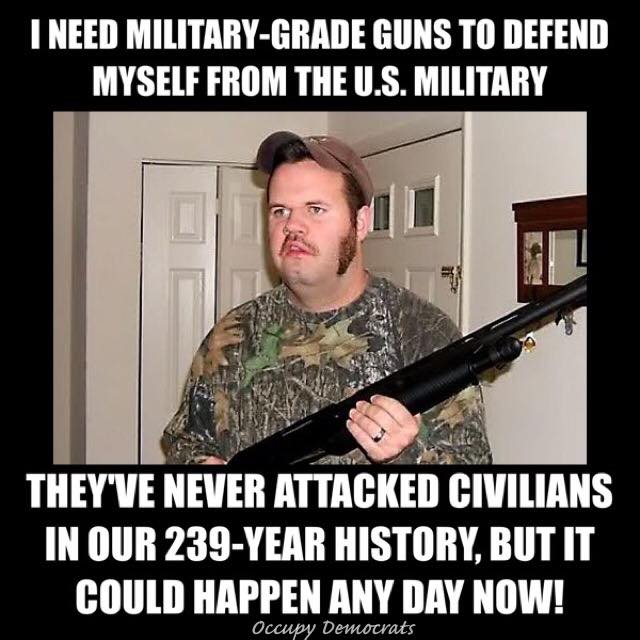 Evidently the licensing process does not necessarily pick them out, is lax by comparison to those in many other countries, and is also subject to abuse – besides which, many of the people responsible for mass shootings were licensed holders of the weapons they were using to kill and maim innocent bystanders. Even so, consider that many of those who do use guns in crime “borrow” their firearms or acquire them by other nefarious means.
Evidently the licensing process does not necessarily pick them out, is lax by comparison to those in many other countries, and is also subject to abuse – besides which, many of the people responsible for mass shootings were licensed holders of the weapons they were using to kill and maim innocent bystanders. Even so, consider that many of those who do use guns in crime “borrow” their firearms or acquire them by other nefarious means.
If millions hold guns, the chances are that a proportion of them are desperate enough to go out and kill somebody, maybe anybody, for their own purposes – the potential is there for disaster, a ticking time bomb and, in my opinion, not a justifiable trade-off for liberty to hold guns.
The issue of access and availability of weapons and ammunition is discussed fully in Michael Moore‘s Bowling for Columbine. I know full well that Moore is not an impartial witness in this documentary, and is not above manipulation in the same way that the gun lobby manipulates arguments and statistics for their own benefit, but his comments are very valid. And so are those of comedian Chris Rock, whose routine on gun control is included in the movie:
“Gun control? We need bullet control! I think every bullet should cost 5,000 dollars. Because if a bullet cost five thousand dollars we wouldn’t have any innocent bystanders.”
But there is more: the reason often given for having guns is to deter criminals. In some countries, it’s quite possible that criminals are armed to the teeth and will shoot to kill if anyone gets in their way. Quite probably the reason they are so armed is because they know householders will also be armed, and therefore they are more likely to take pre-emptive decisions to shoot. In the same way, if you hold guns and an intruder breaks into your house, you will shoot first and ask questions later, and US law apparently tolerates self-defence ahead of calling the police. In the escalation caused by widespread use of firearms, both sides will kill.
In short, this is an arms race, not a deterrent of any description – burglars will still go about their business undeterred, but they will be prepared to meet force with force. My response to anyone who wants to participate in this spiralling madness is simple:
Things can be replaced, people cannot
Is it the sign of a materialist society where assets are treated more highly than human life? Maybe time we rediscovered our values and regained perspective here. Things are more serious than we can imagine. The USA is a powder keg, fuelled by race, economic and other tensions. Maybe there are some who would not say this openly but are happy for fellow citizens to bump one another off, so long as the arms industry continues to profit. A cynical Darwinian attitude that people are expendable? A chilling thought.
It doesn’t have to be like that. In the UK, most citizens are never threatened by guns in their lives, even in the unfortunate eventuality of a house break-in. Our law would frown upon anyone taking indiscriminate action against an intruder, beyond “reasonable self-defence” – in other words, if your life is truly and demonstrably in danger you may have a case for attacking and potentially killing a perpetrator with whatever weapons came to hand to prevent them killing you, but not until. What we need to avoid is to getting into an American vigilante shoot-to-kill culture whereby anyone who we see and suspect may be dangerous is at immediate risk. Luckily we tend to avoid the old Wild West culture of “shoot first, ask questions later.”
Yes, we do have a tiny underworld dealing with illegal guns, mostly to blow away members of other gangs, potentially to use for terrorist offences (the one area in which our police intelligence seems to have unlimited resources), or used by professional hit men, but they are a very tiny minority. We seem to have more of an issue in some areas with knife crime which successive governments have been dealing with in recent years (not that I know anyone who has been mugged at knife-point either), but even then I’d argue that the majority of the UK is far safer without guns than the US and elsewhere with guns.
Having said that, there are plenty of countries where gun ownership is common that do not have anything like the same death rate from gun abuse as the US. Ask yourself what it is about America that means people kill one another with firearms at a rate thousands of times higher than anywhere else (apparently including Columbia) suggests the gun culture there is radically different, one where self-obsessed citizens think nothing of killing – almost as if life was just another shoot-em-up Hollywood movie.
American friends often argue we would be better off with guns, but I’ve yet to hear any convincing argument why. Probably the most common is “you will feel safer” though in all honesty I don’t feel remotely unsafe now, and I know of nobody who lives in fear and feels the need to be armed to ward off attacks. If anything, I would feel very nervous if I had firearms in the house, yet there is a US town where it is now compulsory to own a gun (see here) – and apparently the majority would be happy to use them.
If Brits did feel they were threatened in their locality from potential violence they would probably call the police, who would deal with the issue according to the nature of the threat. Most of us would agree that taking the law into your own hands is always a bad idea, even if a few would disagree.
The simple fact is that making firearms more widely available would lead to more tragic and preventable loss of life in this country, and put arms in the hands of those who would break the law by inclination, or because at some point their mental capacity or mood prevents them exercising good judgement.
For those who feel we should all engage in hunting, most Brits certainly do not go around shooting wild animals willy-nilly, and hunting is rightly a controlled activity here – but those who want to can do so quite legally with licensed shotguns under controlled conditions in approved locations, quite rightly so.
Other firearm-based sports? There are licensed gun clubs for those who wish to engage in target shooting. Apart from farmers and the few people who need shotguns for their jobs, that is surely quite sufficient – nobody else needs guns!
The process to apply for a shotgun licence is quite clear, and involves greater controls than in the US, rightly so (see gun laws by nation here.) Those who have good justification and are demonstrably of sound mind can obtain a weapon – though even those checks appear faulty, given that many of the perpetrators of gun outrages in the States appear to hold valid licences or to get around restrictions with no difficulty whatever – or indeed use guns legally licensed to other members of their family. Those who do not manage fine without firearms, like the rest of us. Why do we need guns? We don’t!
Our policemen do not routinely carry arms (see here and here), much to the amazement of almost every other country. We also take great exception when, as often seems to be the case, armed police shoot dead the wrong man, because they wrongly believed they were being threatened or that intelligence proved badly mistaken.
The prime example of recent years was of course John Charles de Menezes, though 30 seconds of Googling will give you a list of firearm abuses and misuses resulting in wrongful death or injury, though the police are seldom if ever convicted. I suspect the rights of citizens not to be shot by the police would be far less of a factor elsewhere.
Bullets do not discriminate in who they hit, so the less often they are fired the better for everyone. Used as a means of control and power they are a form of social engineering we can well do without, one where the one with the most arms is king, which for a civilised society is a very sad state of affairs.
In America having your own stockpile to become a mini-militia is, in some quarters, a cultural essential. In the UK that is not the case and consequently we have many fewer citizens avoidably killed or injured, simple as that – but also, our country has substantially falling rates of crime.
The NRA might well have a powerful lobby, but the facts speak for themselves when you consider that the 5 US states with the lowest incidence of gun deaths have the strongest controls, and the 5 with the greatest incidence of gun deaths have the most open policies towards open carrying of guns.
I’m not naive enough to believe you can persuade 200 million Americans to give up their weapons without a massive cultural change, something that may take hundreds of years to achieve. However, I am perfectly sure the world would be much better off if guns had not been invented, or at least controlled with serious intent such that nobody dies a needless death, by accident or design.
But then the trouble with all arms races is that nobody wants to be the first to lay their weapon down, be they countries or individuals.
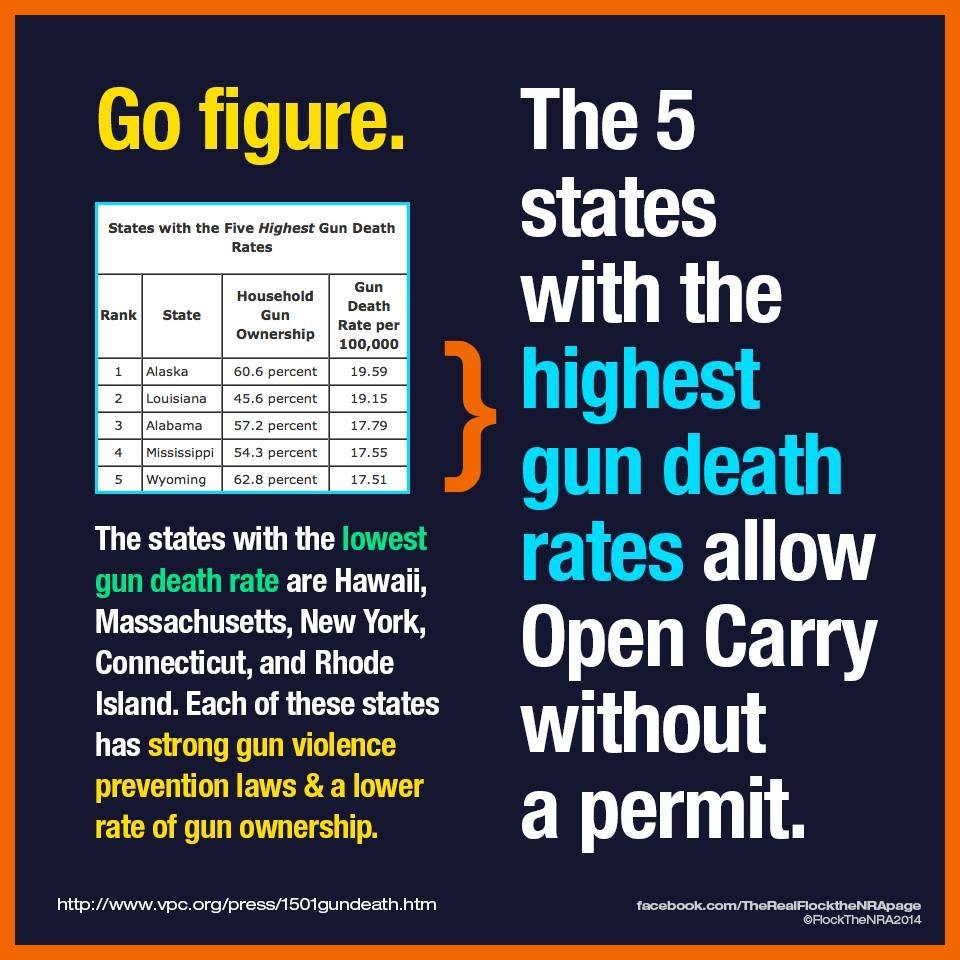
PS. If you thought accidents didn’t happen with gunfire, consider that even the most highly trained fighters in the world get caught in so-called “friendly fire” or get shot “accidentally“.
PPS. The killing of two police officers in Greater Manchester yesterday caused great shock in this country, not least because it is the worst incident of violence against police officers in over 40 years. The point is that this is one case where unarmed officers should not have been sent on call, since it took place during the biggest ever single manhunt in the Tameside area, with well over a hundred armed police officers on duty to find the protagonist, an armed man with a known hatred of police authority. That incident certainly does not justify the routine arming of all police – and is in itself almost unique.
PPPS. One correction to this blog. It seems that only 36% of Americans had legally registered guns in 2011, though given that the volume of guns is much higher:
The FBI estimates that there are over 200 million privately-owned firearms in the US. If you add those owned by the military, law enforcement agencies and museums, there is probably about 1 gun per person in the country. If you want to get a rough idea of how many guns there are out there just look at how many people you see out there then multiply by a factor of estimated ownership. The last best guess was about 350,000,000 Total. That would be 1 weapon for every man woman and child. The average gun enthusiast owns several firearms which includes pistols, shotguns, and rifles of all makes and models. It is often estimated that about 1 in 4 people own any firearms and on average firearms owners own 4 guns each.
PPPPS. RIP Trayvon Martin.
5PS. The debate rages on. One American is seriously trying to convince me that because there are slightly greater gun controls in the major metropolitan cities than in hick towns but higher levels of gun crime, this proves gun controls don’t work. Apparently it did not occur to him that his logic is faulty in a whole bunch of ways, but this was one reply I sent him:
US gun murders ran at 3.2 per 10,000 people in 2010, a total of 9,960 (which rose to 11,419 in 2013). Among other developed countries, the next biggest rate is Switzerland with 0.8. Between 1982 and 2012 there were 62 random mass shootings, which figure seems to be accelerating. In the UK the Hungerford massacre led to strict controls on hand guns, since when we have had precisely zero with handguns. The Cumbria shootings were conducted with two rifles, which are not covered by the same blanket ban. By comparison to UK laws, it is dead easy for any US citizen to obtain weaponry, and as several studies have shown anyone who wants to deceive authorities is rarely prevented from obtaining weapons. More to the point, many of the people who conducted massacres possessed weapons legally, or obtained weapons from people in their family who held the weapons legally.
6PS. 9-year old girl kills instructor by accident while being trained to shoot an automatic Uzi sub-machine gun. See here.
7PS. Here is a cool analysis of gun lobby arguments.
8PS. Think American states have sensible policies for the open carrying of guns? Think again! See here.
9PS. After the latest senseless killings in Charleston, South Carolina by one Dylann Roof (these are his victims), President Obama made this speech:
Good afternoon, everybody. This morning, I spoke with, and Vice President Biden spoke with, Mayor Joe Riley and other leaders of Charleston to express our deep sorrow over the senseless murders that took place last night.
Michelle and I know several members of Emanuel AME Church. We knew their pastor, Reverend Clementa Pinckney, who, along with eight others, gathered in prayer and fellowship and was murdered last night. And to say our thoughts and prayers are with them and their families, and their community doesn’t say enough to convey the heartache and the sadness and the anger that we feel.
Any death of this sort is a tragedy. Any shooting involving multiple victims is a tragedy. There is something particularly heartbreaking about the death happening in a place in which we seek solace and we seek peace, in a place of worship.
Mother Emanuel is, in fact, more than a church. This is a place of worship that was founded by African Americans seeking liberty. This is a church that was burned to the ground because its worshipers worked to end slavery. When there were laws banning all-black church gatherings, they conducted services in secret. When there was a nonviolent movement to bring our country closer in line with our highest ideals, some of our brightest leaders spoke and led marches from this church’s steps. This is a sacred place in the history of Charleston and in the history of America.
The FBI is now on the scene with local police, and more of the Bureau’s best are on the way to join them. The Attorney General has announced plans for the FBI to open a hate crime investigation. We understand that the suspect is in custody. And I’ll let the best of law enforcement do its work to make sure that justice is served.
Until the investigation is complete, I’m necessarily constrained in terms of talking about the details of the case. But I don’t need to be constrained about the emotions that tragedies like this raise. I’ve had to make statements like this too many times. Communities like this have had to endure tragedies like this too many times. We don’t have all the facts, but we do know that, once again, innocent people were killed in part because someone who wanted to inflict harm had no trouble getting their hands on a gun. Now is the time for mourning and for healing.
But let’s be clear: At some point, we as a country will have to reckon with the fact that this type of mass violence does not happen in other advanced countries. It doesn’t happen in other places with this kind of frequency. And it is in our power to do something about it. I say that recognizing the politics in this town foreclose a lot of those avenues right now. But it would be wrong for us not to acknowledge it. And at some point it’s going to be important for the American people to come to grips with it, and for us to be able to shift how we think about the issue of gun violence collectively.
The fact that this took place in a black church obviously also raises questions about a dark part of our history. This is not the first time that black churches have been attacked. And we know that hatred across races and faiths pose a particular threat to our democracy and our ideals.
The good news is I am confident that the outpouring of unity and strength and fellowship and love across Charleston today, from all races, from all faiths, from all places of worship indicates the degree to which those old vestiges of hatred can be overcome. That, certainly, was Dr. King’s hope just over 50 years ago, after four little girls were killed in a bombing in a black church in Birmingham, Alabama.
He said they lived meaningful lives, and they died nobly. “They say to each of us,” Dr. King said, “black and white alike, that we must substitute courage for caution. They say to us that we must be concerned not merely with [about] who murdered them, but about the system, the way of life, the philosophy which produced the murderers. Their death says to us that we must work passionately and unrelentingly for the realization of the American Dream.
“And if one will hold on, he will discover that God walks with him, and that God is able to lift you from the fatigue of despair to the buoyancy of hope, and transform dark and desolate valleys into sunlit paths of inner peace.”
Reverend Pinckney and his congregation understood that spirit. Their Christian faith compelled them to reach out not just to members of their congregation, or to members of their own communities, but to all in need. They opened their doors to strangers who might enter a church in search of healing or redemption.
Mother Emanuel church and its congregation have risen before –- from flames, from an earthquake, from other dark times -– to give hope to generations of Charlestonians. And with our prayers and our love, and the buoyancy of hope, it will rise again now as a place of peace.
Thank you.
The NRA reaction? “No comment“
10PS. 3% of American men own 50% of all guns.
11PS. This article explodes many of the myths and misinformation put about by the NRA for their own propaganda purposes:
A new study from researchers at Harvard University obliterates nearly every single NRA talking point about guns. Not only do more guns not equal less crime, but the study shows that more guns equals more crime, including more firearm robberies, firearm assaults, and homicides by firearm.
The Harvard study goes further, looking at the overall homicide rate in states with the highest number of gun owners, compared to those with the lowest. Researchers found that the rate of all homicides is two times higher in states with the highest number of gun owners. The research destroys another common NRA talking point, which claims that if people don’t use guns to kill, they’ll just use something else.
The new study, which will be published in the American Journal of Preventative Medicine, compliments a 2013 study, which found that increased gun ownership corresponds to an overall increased rate of non stranger homicides. While the number of stranger related homicides remains virtually the same in states with high gun ownership, the number of people killed by someone they know was shown to increase dramatically, as the number of gun owners increased. The Harvard study also supports the conclusions of a 2014 Boston University study, which showed that the overall homicide rate increased 0.7 percent, for every one percent increase in gun ownership.
The Harvard study found that states with highest numbers of gun owners had 6.8 times more firearm assaults, when compared with states with the lowest numbers of gun owners. Firearm homicides were 2.8 times higher. Additionally, the rate of firearm robberies was found to increase, point by point, in correlation to an increase in gun ownership.
Researchers who worked on the study also wanted to know which came first, higher crime rates or higher numbers of gun owners. The right wing hypothesis that people respond to high crime by buying more guns to defend themselves was also shown to be wrong. Researchers found that increased gun ownership preceded the increased crime rate.
While study researcher David Hemenway, the director of the Harvard Injury Control Research Center, would not go as far as to say that research proves causation, the results clearly suggest that it’s not increased crime that leads to more gun ownership. Instead, it is increased gun ownership that leads to more crime.
In summing up the research, Michael Monuteaux, an epidemiologist and professor of pediatrics at Harvard Medical School, who also participated in the study, said:
“We found no support for the hypothesis that owning more guns leads to a drop or a reduction in violent crime. Instead, we found the opposite.”
Hemenway told Live Science:
“This study suggests that it’s really hard to find evidence that where there are more guns, there are less crimes, but you can easily find evidence that where there are a lot more guns, there are a lot more gun crimes.”
The Harvard study is just one of many studies that have shown a correlation between increased gun ownership and increased crime rates, in recent years. A study released by Stanford University last year looked at data from 1999 to 2010, specifically analyzing information from areas that had relaxed gun laws at the urging of the NRA. The Stanford research specifically showed that relaxed gun laws led to an increase in crime, instead of a decrease, in spite of NRA predictions that the opposite would happen.
As David Pakman discusses in the video below, NRA talking points center around one piece of research, which was conducted before gun rights advocates managed to deregulate firearms in many areas of the US. Thanks to the NRA, about the same time that firearm regulations were gutted, Congress cut off funding for further research on the impact of these lax gun laws (surely just a remarkable coincidence -ed.).
While an executive order, signed by president Obama two years ago, directed federal agencies to resume research on the impact of gun ownership on society, the GOP congress has refused to release funding for any new research.
In spite of the right wing’s efforts to keep the public in the dark about the consequences of lax gun laws on society, new studies are emerging. Each new batch of research published destroys another NRA
talking pointlie, just as the organization and their hacks in Washington knew it would, when they worked to cut off funding for these types of studies, almost a decade ago.When you have nothing but lies to offer, your only option is to try to suppress the truth. As the old adage says, sooner or later the truth will always come out. In this case, the real question is; How many innocent lives will be lost while we’re waiting?
11PS. This is an excellent statistical analysis in 17 charts of gun violence in America.
12PS. Why Obama is helpless to change the gun laws.
13PS. Think mass shootings are all about mental illness? Think again! See here.
I get really really tired of hearing the phrase “mental illness” thrown around as a way to avoid saying other terms like “toxic masculinity,” “white supremacy,” “misogyny” or “racism.”
We barely know anything about the suspect in the Charleston, South Carolina, atrocity. We certainly don’t have testimony from a mental health professional responsible for his care that he suffered from any specific mental illness, or that he suffered from a mental illness at all.
We do have statistics showing that the vast majority of people who commit acts of violence do not have a diagnosis of mental illness and, conversely, people who have mental illness are far more likely to be the victims of violence than the perpetrators.
We know that the stigma of people who suffer from mental illness as scary, dangerous potential murderers hurts people every single day — it costs people relationships and jobs, it scares people away from seeking help who need it, it brings shame and fear down on the heads of people who already have it bad enough.
But the media insists on trotting out “mental illness” and blaring out that phrase nonstop in the wake of any mass killing. I had to grit my teeth every time I personally debated someone defaulting to the mindless mantra of “The real issue is mental illness” over the Isla Vista shootings.
“The real issue is mental illness” is a goddamn cop-out. I almost never hear it from actual mental health professionals, or advocates working in the mental health sphere, or anyone who actually has any kind of informed opinion on mental health or serious policy proposals for how to improve our treatment of the mentally ill in this country.
What I hear from people who bleat on about “The real issue is mental illness,” when pressed for specific suggestions on how to deal with said “real issue,” is terrifying nonsense designed to throw the mentally ill under the bus. Elliot Rodger’s parents should’ve been able to force risperidone down his throat. Seung-Hui Cho should’ve been forcibly institutionalized. Anyone with a mental illness diagnosis should surrender all of their constitutional rights, right now, rather than at all compromise the right to bear arms of self-declared sane people.
What’s interesting is to watch who the mentally ill people are being thrown under the bus to defend. In the wake of Sandy Hook, the NRA tells us that creating a national registry of firearms owners would be giving the government dangerously unchecked tyrannical power, but a national registry of the mentally ill would not — even though a “sane” person holding a gun is intrinsically more dangerous than a “crazy” person, no matter how crazy, without a gun.
We’ve successfully created a world so topsy-turvy that seeking medical help for depression or anxiety is apparently stronger evidence of violent tendencies than going out and purchasing a weapon whose only purpose is committing acts of violence. We’ve got a narrative going where doing the former is something we’re OK with stigmatizing but not the latter. God bless America.
What’s also interesting is the way “The real issue is mental illness” is deployed against mass murderers the way it’s deployed in general — as a way to discredit their own words. When you call someone “mentally ill” in this culture it’s a way to admonish people not to listen to them, to ignore anything they say about their own actions and motivations, to give yourself the authority to say you know them better than they know themselves.
This is cruel, ignorant bullshit when it’s used to discredit people who are the victims of crimes. It is, in fact, one major factor behind the fact that the mentally ill are far more likely to be the targets of violence than the perpetrators–every predator loves a victim who won’t be allowed to speak in their own defense.
But it’s also bullshit when used to discredit the perpetrators of crimes. Mass murderers frequently aren’t particularly shy about the motives behind what they do — the nature of the crime they commit is attention-seeking, is an attempt to get news coverage for their cause, to use one local atrocity to create fear within an entire population. (According to the dictionary, by the way, this is called “terrorism,” but we only ever seem to use that word for the actions of a certain kind — by which I mean a certain color — of mass killer.)
Elliot Rodger told us why he did what he did, at great length, in detail and with citations to the “redpill” websites from which he got his deranged ideology. It isn’t, at the end of the day, rocket science — he killed women because he resented them for not sleeping with him, and he killed men because he resented them for having the success he felt he was denied.
Yes, whatever mental illness he may have had contributed to the way his beliefs were at odds with reality. But it didn’t cause his beliefs to spring like magic from inside his brain with no connection to the outside world.
That’s as deliberately obtuse as reading the Facebook rants of a man who rambled on at great length about how much he hated religion and in particular hated Islam and deciding that the explanation for his murdering a Muslim family is that he must’ve just “gone crazy” over a parking dispute.
14PS. How to fix the Second Amendment, according to the Washington Post (see here):
“A well regulated Militia, being necessary to the security of a free State, the right of the people to keep and bear Arms when serving in the Militia shall not be infringed.”
15PS. A further comparative review of gun culture can be found here.
16PS. More background information about the NRA:
National Rifle Association of America
11250 Waples Mill Road
Fairfax, Virginia 22030
U.S.A.
Telephone: (703) 267-1000
Toll Free: (800) NRA-3888
Fax: (703) 267-3938
Web site: http://www.nrahq.orgNonprofit Organization
Incorporated: 1871 as the National Rifle Association
Employees: 450
Sales: $131.3 million (1998)
NAIC: 81394 Political OrganizationsThe National Rifle Association is a nonprofit organization promoting gun safety and lobbying for its interpretation of the second amendment, the right to bear arms. (The amendment in full, subject to various modern interpretations, reads: “A well-regulated militia, being necessary to the security of a free State, the right of the people to keep and bear arms shall not be infringed.”) Long respected by some and feared by others on Capitol Hill, the Association’s impressive influence extends beyond its three million members. The NRA reaches one million young men and women through educational programs, including 40,000 in its young hunters program. Moreover, 6,000 marksmen compete nationally in the Association’s shooting competitions.
Yankee Origins
The NRA traces its origins to the 1870s, when two former Union Army officers—Colonel William Conant Church and General George Wingate—formed the National Rifle Association (NRA) to foster marksmanship. The NRA was chartered in the state of New York on November 17, 1871. Another well-known Civil War veteran, General Ambrose Burnside, served as the group’s first president. Burnside had been a U.S. Senator and governor of Rhode Island. Although he lobbied very effectively for funding, he was not otherwise actively involved in the fledgling group and resigned within a year.
Through the founders’ efforts, the state of New York granted the NRA $25,000 to create a practice ground on a 100-acre lot on Long Island. The Creedmoor range opened there in 1873 and hosted the Irish Rifle Association in a two-entrant international shooting competition held the next year. The event drew 8,000 spectators. Even in those early days, however, the NRA faced anti-gun sentiment in the cities, and in 1892 the land grant was rescinded and the range was moved to Sea Girt, New Jersey.
New York governor Alonzo Cornell, predicting a long age of peace, cut the NRA’s funding in 1880. However, technological innovations and events overseas soon made weapons training relevant again. Dutch South African farmers demonstrated the effectiveness of new, highly accurate rifles in the Boer War, which led to a renewed interest in marksmanship and military preparedness in the British Empire and in America.
A revitalized NRA began setting up programs at colleges and military schools in 1903; within three years there were more than 200 young men competing at the shooting contest in New Jersey.
NRA headquarters moved to Washington, D.C. in 1907. According to Osha Gray Davidson’s book, Under Fire, the NRA persuaded Congress and the War Department to first sell, then give away, surplus rifles and ammunition to NRA-sponsored shooting clubs. Between World War I and World War II, 200,000 rifles were reportedly distributed at cost to NRA members, whose ranks were ballooning. The NRA also received federal money and army assistance for its shooting competitions during this time.
The Association’s Legislative Affairs Division was created in 1934 to disseminate information to its members regarding pending gun control legislation. Among the vehicles of communication was the group’s flagship publication, The American Rifleman, published sporadically at first and later gaining a large and regular readership. A huge NRA letter-writing campaign helped temper one wave of gun control sentiment so that the National Firearms Act of 1934 would extend only to regulating machine guns and sawed-off shotguns. In 1938, the NRA supported provisions to limit the sale of guns across state lines and prevent the sale of guns to fugitives and convicted felons.
At the dawn of World War II, the NRA collected 7,000 guns to aid Great Britain’s defense. When the United States was drawn into the war, the NRA offered its facilities and encour-aged its members to guard factories.
In the postwar years, the NRA focused on hunting issues, developing a pioneering hunter education program with the state of New York. The Association also began a program for instructing policemen in marksmanship; it would introduce the country’s only national law enforcement certification program in 1960. Membership in the NRA reached nearly 300,000 and employment 140 in the 1950s.
The Controversial 1960s and 1970s
The assassination of President John F. Kennedy in November 1963 prompted the nation to rethink the availability of guns in the United States, which ultimately led to the Gun Control Act of 1968. This act banned the sale of guns through the mail; Lee Harvey Oswald had ordered his infamous rifle from the pages of American Rifleman for just $19.95.
A new NRA shooting range, Camp Perry, had been constructed in Ohio on the Lake Erie shore, and during this time it became home to the NRA’s National Matches. The U.S. government supplied $3 million a year and the use of 5,000 troops a year for these tournaments. Opposition to such government aid to the NRA was challenged; Senator Edward Kennedy attempted to cut off the financial aid in the late 1960s and routinely fought NRA-backed bills in Congress throughout his career.
The NRA launched a new magazine, The American Hunter, in 1973, addressing hunting issues only. Two years later, it formed the Institute for Legislative Action (ILA), designed specifically as a lobby for second amendment rights. The ILA was headed by Harlon Bronson Carter, a Texan controversial for his involvement in the shooting murder of a Mexican youth, for which he was convicted and later cleared. The goals of the NRA during the 1970s had become two-fold. Sportsmanship and safety, embodied in The American Hunter, competed for attention with the role of the ILA as a gun lobby.
During this time, the NRA acquired 37,000 acres of land in the New Mexico wilderness. Controversy in the organization arose, according to Davidson’s Under Fire, when some proposed that the New Mexico lands be designated as a shooting center, while others favored an outdoor center, dedicated to camping, wilderness survival, environmentalism, and other wide-ranging concerns, in addition to marksmanship and safety. The rift in the NRA—between those supporting the single issue of second amendment rights and those hoping to broaden the scope of the NRA— culminated, according to Davidson, at the NRA national convention of 1977 in Cincinnati. Led by Carter, the so-called “hard-liners” took over the convention in what became known as the “Cincinnati Revolt.” In short, Carter and his supporters, fervently opposed to any form of gun control, wrested control of the NRA from the existing leaders (whose concerns included sportsmanship and environmentalism), turning the NRA into a single-issue gun lobby, according to Davidson. Carter was named executive vice-president, the most powerful position in the organization.
Strength in the Reagan Years
With newly reorganized management and purpose, the NRA entered the 1980s on more cohesive footing. Energies were focused on opposing gun control. When a few local communi-ties, such as Morton Grove, Illinois, enacted city ordinances to ban handguns all together in 1981, the NRA fought the ban unsuccessfully in court. The group then battled similar legislation on the state level, helping defeat Proposition 15 in California, which called for a ban on the sale of new handguns. However, the NRA was unable to overturn a new ban on handguns in Maryland in 1988.
A national print advertising campaign launched in January 1982 gained wide attention. With the tagline “I am the NRA,” a variety of individuals—including an eight year-old boy, former astronaut Wally Schirra, former Dallas Cowboys cheer-leader Jo Anne Hall, actor/singer Roy Rogers, and others— highlighted the group’s diverse member base. While several magazines refused to run the ads, particularly those ads depicting handguns, some 45 magazines did run them, and they were credited with raising the NRA’s profile considerably. The NRA had more than one million members in 1977; its ranks would reach 2.6 million by the time Ronald Reagan became the first U.S. president to address the group in 1983. Reagan’s address to the NRA was regarded as an important affirmation of NRA principles; the president averred that “we will never disarm any American who seeks to protect his or her family from fear or harm.”
G. Ray Arnett was picked to succeed Carter in 1985. Sur-rounded by scandal, however, Arnett lasted only until May 1986, when ILA leader J. Warren Cassidy became the next executive vice-president.
Company Perspectives:
While widely recognized today as a major political force and as America’s foremost defender of second amendment rights, the NRA has, since its inception, been the premier firearms education organization in the world. But our successes would not be possible without the tireless efforts and countless hours of service our nearly three million members have given to champion second amendment rights and support NRA programs. As former Clinton spokesman George Stephanopoulos said, “Let me make one small vote for the NRA. They’re good citizens. They call their Congressmen. They write. They vote. They contribute. And they get what they want over time.”
In 1986, the NRA had three million members and income of about $66 million a year. During this time, the group was sponsoring the McClure-Volkmer Act, which amended restrictions in the Gun Control Act of 1968 and was eventually passed. The group also fought to temper legislation banning Teflon-coated “cop killer” bullets. By this time, the issue of gun control in the United States had become highly fragmented and charged with emotion. In fact, the Association was beginning to find itself on different sides of gun control issues with much of the country’s police force. In the late 1980s, the NRA ran political ads and direct mail campaigns against several police chiefs who favored regulating handguns.
Although many of its members were Democrats, the NRA spent an estimated $7 million to defeat Democratic candidate Michael Dukakis, a staunch supporter of gun control, in the 1988 presidential campaign. Republican George Bush broke ranks with some in the NRA while campaigning for the presidential nomination, calling for a ban on “plastic” handguns. Still, as an avid hunter, veteran, and NRA member, he appealed to the group and won its approval.
New Challenges in the 1990s
As the U.S. public became ever more aware of increases in violence involving firearms, the NRA again sought to address issues beyond gun ownership. The NRA Foundation was created in 1990 to raise tax-exempt funds for gun education. The Eddie Eagle Gun Safety Program, started two years earlier, taught elementary and middle school children to avoid guns and report them to adults. Moreover, Refuse to Be a Victim seminars, introduced in 1993, lectured women on personal safety issues. According to the NRA, three out of four women would suffer through a violent crime in their lifetimes.
The early 1990s were difficult years financially for the organization. According to NRA figures cited by Fortune magazine, the NRA lost $10 million in 1991, $38 million in 1992, and $22 million in 1993. In 1991, the board replaced Warren Cassidy—whose reputation was tainted by a sex scandal, less than stellar financial results, and diminishing popularity due to what some perceived as a willingness to compromise the Association’s mission—with long-time politico Wayne LaPierre, another former leader of the group’s lobbying arm, the ILA.
The NRA then faced several challenges to its mission. Ef-forts to overturn New Jersey’s ban on semiautomatic weapons and Virginia’s gun-rationing program in 1993 both failed. In the late 1980s, the NRA had lobbied unsuccessfully against a national ban of certain semiautomatic assault rifles. Moreover, after several years of struggle, in 1994 the Brady Bill passed. Named for White House press secretary Jim Brady, who was shot and partially paralyzed during an attempt on Reagan’s life, the bill mandated a five-day waiting period and a background check for gun purchasers. (This process would replaced by a computerized verification system run by the FBI in 1998.) However, the Brady Bill did not apply to flea markets and gun shows, and gun sales at these venues boomed.
Annual revenues for the NRA approached $150 million in 1994 as the group attracted a more active and high profile membership. The group spent $15 million on a new headquarters in Fairfax, Virginia, in the mid-1990s and also invested in a new computer system.
To address issues of increasing violent crime in the country, the NRA called for more prisons, tougher sentences, and more law enforcement officers. However, the Association continued to struggle with public relations issues and alienated certain law enforcement groups. Congressman John Dingell, an NRA board member, had called the U.S. Department of Alcohol, Tobacco, and Firearms (ATF) a “jackbooted group of fascists” in one of the group’s promotional films in 1981. The NRA repeated the rhetoric in a 1995 fundraising letter, prompting former president George Bush to rescind his life membership.
In October 1997, nine firearms manufacturers, including Smith & Wesson, announced they were voluntarily adding child safety locks to their products. The unprecedented break from NRA policy was prompted by a litigious climate that had cities such as Chicago and New Orleans filing lawsuits similar to the ones that had been launched against the cigarette industry. The gun makers risked a boycott by NRA members who opposed compromise of any kind. According to Newsweek, the publicly-traded Sturm, Ruger firm had faced such a boycott earlier in the decade after it came out in favor of limiting high capacity ammo clips for assault weapons.
In 1997, in the face of such challenges, the NRA began publishing The American Guardian, designed to appeal to a more general audience, with less emphasis on technical subjects and more on self-defense and sporting uses for firearms. Membership in the NRA, after reaching at 3.5 million, had fallen by about a million in the mid-1990s. Still, the group held the largest convention in its history in 1998, attracting 41,000 attendees. In the same year, the NRA elected as its president the actor Charlton Heston, perhaps best known for his performance as Moses in the epic film The Ten Commandments. Another famous actor, Tom Selleck, appeared in a new round of magazine advertising for the NRA.
In the late 1990s, following several highly publicized inci-dents of violence involving guns among American teenagers, some polls indicated that 70 to 80 percent of Americans favored stricter gun control laws. However, Newsweek reported, the fear of political retaliation from the NRA killed a new round of gun control bills in June 1999. NRA membership climbed again late in the decade. By May 2000, the Association reported 3.7 million members fighting challenges to the right to bear arms.
Key Dates:
- 1871:
- The NRA is chartered in New York.
- 1903:
- Shooting programs for students is set up.
- 1907:
- National headquarters moves to Washington, D.C.
- 1934:
- The Legislative Affairs Division is created to organize political action.
- 1949:
- NRA launches a hunter education program.
- 1968:
- First significant gun control legislation in 30 years passes.
- 1975:
- Institute for Legislative Action, the NRA’s lobbying unit, is created.
- 1983:
- Reagan becomes the first U.S. president to address the NRA.
- 1994:
- The Brady Bill, calling for waiting periods and background checks, is passed.
- 1995:
- A new headquarters building is constructed.
- 1998:
- NRA hosts its largest convention ever and names actor Charlton Heston president.
Principal Divisions
Institute for Legislative Action; NRA Foundation.
Principal Competitors
Handgun Control, Inc.
Further Reading
Bai, Matt, “Caught in the Cross-Fire,” Newsweek, June 28, 1999, pp. 31–32.
——, “Clouds Over Gun Valley,” Newsweek, August 23, 1999, pp. 34–35.
Birnbaum, Jeffrey H., “Under the Gun,” Fortune, December 6, 1999, pp. 211–18.
Davidson, Osha Gray, “Guns and Poses,” New Republic, October 11, 1993, p. 12.
——, Under Fire: The NRA and the Battle for Gun Control, New York: Henry Holt, 1993.
Drake, Donald C., “NRA Made Anti-Gun Lawmakers Pay in Election; Group Targeted Oklahoma Race,” Times-Picayune (New Orleans), December 4, 1994, p. A8.
Fineman, Howard, “The Gun War Comes Home,” Newsweek, August 23, 1999, pp. 26–32.
France, Mike, William C. Symonds, and Seanna Browder, “Can Gunmakers Disarm Their Attackers?,” Business Week, November 10, 1997, p. 94.
Gilmore, Russell S., Crack Shots and Patriots: The National Rifle Association and America’s Military-Sporting Tradition, 1871–1929, Ph.D. dissertation, University of Wisconsin, 1975.
Graham, George, “US Gun Group Returns to Clinton Offensive: NRA
Chief Defends Fund-Raising Letter,” Financial Times, May 22, 1995, p. 6.
“Gun Control: Bang Bang, You’re Dead,” Economist, September 30, 2000, pp. S26–S27.
“Guns in America: Arms and the Man,” Economist, July 3, 1999, pp. 17–19.
Hornblower, Margot, “Have Gun, Will Travel,” Time, July 6,1998, pp. 44–46.
Leddy, Edward, Magnum Force Lobby, Lanham, Md.: University Press of America, 1987.
Novak, Viveca, “Picking a Fight with the NRA,” Time, May 31, 1999, p. 54.
Smolowe, Jill, and Andrea Sachs, “The NRA: Go Ahead, Make Our Day,” Time, May 29, 1995, p. 18.
Trefethen, James, and James Serven, Americans and Their Guns: The National Rifle Association’s Story Through Nearly a Century of Service to the Nation, Harrisburg, Pa.: Stackpole Books, 1967.
“Wounding the Gun Lobby,” Time, March 29, 1993, p. 29.
—Frederick C. Ingram
17PS. On 1 July 2015, the US State of Indiana made it lawful to own sawn-off shotguns, typically banned around the world for their long association with crime (see here.)
18PS. Mental health checks should prevent people getting guns, except Congress prevents such checks. This article makes startling reading:
JUNE 12, 2016
Forty-nine people were killed and 53 wounded when Omar Mateen opened fire at a crowded gay nightclub in Orlando, Fla. He used at least two guns, a Sig Sauer AR-15-style assault rifle and a Glock handgun.
2013
The F.B.I. learned that Mr. Mateen had made comments to co-workers alleging possible terrorist ties, an official said. The next year, the F.B.I. investigated him again for possible ties to an American who went to Syria to fight for an extremist group, but authorities concluded that he “did not constitute a substantive threat at that time.”
A FEW DAYS BEFORE THE SHOOTING
Mr. Mateen legally bought at least two guns, a federal official said. “He is not a prohibited person, so he can legally walk into a gun dealership and acquire and purchase firearms,” said Trevor Velinor, an agent at the Bureau of Alcohol, Tobacco, Firearms and Explosives.
JUNE 12, 2016
Forty-nine people were killed and 53 more were wounded in the crowded nightclub. Mr. Mateen was killed by the police inside the club.
DEC. 2, 2015
Syed Rizwan Farook and Tashfeen Malik, husband and wife, killed 14 people at a holiday office party in San Bernardino, Calif. Four guns were recovered: a Smith & Wesson M&P assault rifle, a DPMS Panther Arms assault rifle, a Smith & Wesson handgun and a Llama handgun.
BEFORE THE SHOOTING
“We believe that both subjects were radicalized and for quite some time,” said David Bowdich, the F.B.I. assistant director. The attackers are not known to have had previous contact with law enforcement.
BETWEEN 2007 AND 2012
Mr. Farook bought the two handguns legally in California, federal officials said. The guns were purchased at Annie’s Get Your Gun, a gun store in Corona, Calif., The Los Angeles Times reported.
BETWEEN 2007 AND 2012
Enrique Marquez, a former neighbor of Mr. Farook’s family, bought the two assault rifles in California, officials said. Mr. Marquez was later charged with lying about the rifle purchases and supplying the assault weapons to the attackers.
DEC. 2, 2015
The couple killed 14 people at a holiday party. Moments before the attack began, Ms. Malik posted an oath of allegiance to the Islamic State on Facebook.
OCT. 1, 2015
Christopher Harper-Mercer, 26, killed nine people at Umpqua Community College in Oregon, where he was a student. He was armed with six guns, including a Glock pistol, a Smith & Wesson pistol, a Taurus pistol and a Del-Ton assault rifle, according to The Associated Press.
2008
Mr. Harper-Mercer was in the Army for one month, but was discharged before completing basic training.
2009
He graduated from the Switzer Learning Center in Torrance, Calif., which teaches students with learning disabilities and emotional issues.
BEFORE SHOOTING
In all, Mr. Harper-Mercer owned 14 firearms, all of which were bought legally through a federally licensed firearms dealer, a federal official said. Some were bought by Mr. Harper-Mercer, and some by members of his family.
OCT. 1, 2015
He killed nine people in Roseburg, Ore.
AUG. 26, 2015
Vester Lee Flanagan II, 41, shot and killed a Roanoke, Va., television reporter and a cameraman with a Glock handgun while they were reporting a story live.
2000
Mr. Flanagan filed a lawsuit against a TV station in Tallahassee, Fla., that had fired him, alleging he was the victim of racial slurs and bullying.
2012
He was hired at WDBJ in Roanoke, but within months his bosses had documented problems with his harsh language and aggressive behavior. He was later fired and filed another harassment lawsuit.
JUNE 2015
Federal officials said Mr. Flanagan bought the gun legally from a licensed dealer. He had not been convicted of a crime or determined to be mentally ill.
AUG. 26, 2015
Mr. Flanagan killed the reporter and cameraman, injured a woman who was being interviewed and died after shooting himself.
JULY 23, 2015
Using a .40-caliber semiautomatic pistol bought from a pawnshop, John R. Houser killed two people and wounded nine others at a movie theater in Lafayette, La.
2006
Mr. Houser was denied a state-issued concealed weapons permit because he was accused of domestic violence and soliciting arson.
2008
A judge ordered him sent to a psychiatric hospital.
2014
Mr. Houser bought the weapon in Alabama. Officials said it had been purchased legally, though he had been denied a concealed weapons permit earlier, and despite concerns among family members that he was violent and mentally ill.
JULY 23, 2015
He killed two people in Lafayette.
JUNE 17, 2015
Dylann Roof, 21, killed nine people with a .45-caliber Glock pistol at a historic black church in Charleston, S.C.
FEBRUARY 2015
Mr. Roof was charged with a misdemeanor for possessing Suboxone, a prescription drug frequently sold in illegal street transactions.
APRIL 2015
He purchased a gun from a store in West Columbia, S.C. Mr. Roof should have been barred from buying a gun because he had admitted to possessing drugs, but the F.B.I. examiner conducting the required background check failed to obtain the police report from the February incident.
JUNE 17, 2015
Mr. Roof joined a Bible study group at Emanuel A.M.E. Church and opened fire with the gun he bought in April.
OCT. 24, 2014
Jaylen Ray Fryberg, 15, used his father’s Beretta pistol to shoot and kill four students in his high school’s cafeteria in Marysville, Wash.
2002
Raymond Lee Fryberg Jr., Jaylen’s father, was the subject of a permanent domestic violence protection order, which should have been entered into the federal criminal background database.
2013
Mr. Fryberg applied to buy the Beretta from a gun shop on the Indian reservation where he lived with Jaylen. A background check failed to come up with the protection order because it was never entered into the system.
OCT. 24, 2014
Jaylen Fryberg texted five of his fellow students to come to the cafeteria, where he opened fire.
APRIL 2, 2014
Specialist Ivan Antonio Lopez opened fire at Fort Hood with a Smith & Wesson semiautomatic pistol, killing three people and wounding 16 others.
2011
Specialist Lopez came back from a four-month deployment to Iraq and told his superiors that he had suffered a traumatic head injury there. Military officials said he had never seen combat and was being evaluated for possible post-traumatic stress disorder.
MARCH 2014
Specialist Lopez had seen a military psychiatrist as recently as the month before the shooting. He was being treated for depression and anxiety, and had been prescribed Ambien to help him sleep.
MARCH 1, 2014
Mr. Lopez bought his gun at the same shop where Nidal Malik Hasan, an Army major, had bought at least one of the weapons used in a 2009 mass shooting on the base that killed 13 people.
APRIL 2, 2014
Around 4 p.m., Mr. Lopez started firing on soldiers.
SEPT. 16, 2013
Aaron Alexis, 34, used a Remington shotgun to kill 12 people at the Washington Navy Yard.
2011
Mr. Alexis was given an honorable discharge after showing what Navy officials called a “pattern of misbehavior” during four years as a reservist.
A MONTH BEFORE THE SHOOTING
He twice sought treatment from the Department of Veterans Affairs for psychiatric issues. He told police in Rhode Island that people were pursuing him and sending vibrations through the walls of his hotel.
SEPT. 2013
He was stopped from buying an assault rifle at a Virginia gun store, but was allowed to buy a shotgun. He passed local and state background checks.
SEPT. 16, 2013
He killed 12 people at the Navy Yard.
DEC. 14, 2012
Adam Lanza, 20, shot and killed his mother in their home, then killed 26 people, mostly children, at Sandy Hook Elementary School in Newtown, Conn., using a Bushmaster XM-15 rifle and a .22-caliber Savage Mark II rifle.
2009
Mr. Lanza graduated from high school. Some classmates said he had been bullied in high school. He struggled with a developmental disorder and was described as acutely shy, not known to have close friends.
AFTER HIGH SCHOOL
He was “completely untreated in the years before the shooting” for psychiatric and physical ailments like anxiety and obsessive-compulsive disorder, a state report found.
BEFORE THE SHOOTING
His mother, Nancy Lanza, a gun enthusiast, legally obtained and registered a large collection of weapons and would often take her sons to shooting ranges.
DEC. 14, 2012
Mr. Lanza used his mother’s guns to kill her and 26 others.
AUG. 5, 2012
Wade M. Page, 40, killed six people with a Springfield Armory semiautomatic handgun when he opened fire in the lobby of a Sikh temple in Oak Creek, Wis., as congregants arrived for Sunday services.
1994
While in the Army at Fort Bliss in El Paso, Tex., Mr. Page was charged with criminal mischief after kicking holes in the wall of a bar. He pleaded guilty.
EARLY 2000S
He came to the attention of authorities because of his affiliation with a white-power band called End Apathy, which performed songs with violent lyrics.
JULY 2012
He bought the firearm legally at a gun shop outside Milwaukee. He passed a background check and paid $650 in cash.
AUG. 5, 2012
He killed six people and wounded three others at the temple.
JULY 20, 2012
James E. Holmes, 24, killed 12 people and wounded 70 at a theater in Aurora, Colo., using a Smith & Wesson semiautomatic rifle, a Remington shotgun and a Glock .40-caliber semiautomatic pistol.
MARCH 2012
Over four months, Mr. Holmes legally bought more than 3,000 rounds of ammunition for handguns, 3,000 rounds for a semiautomatic rifle and 350 shells for a 12-gauge shotgun, all over the Internet.
MAY 2012
He was seeing a psychiatrist and in the process of withdrawing from a graduate program at the University of Colorado Denver’s Anschutz Medical Campus.
MAY 2012
In the 60 days before the shooting, he bought four guns legally at local gun shops. Seeing a psychiatrist, even for a serious mental illness, would not disqualify him from buying a gun.
JULY 20, 2012
He opened fire in the theater, killing 12 people.
APRIL 2, 2012
One L. Goh, 43, opened fire with a semiautomatic handgun at a small religious college in Oakland, Calif., where he had been a student. He killed seven people.
BEFORE SHOOTING
“He was a loner and what some might call a loser, but he didn’t exhibit any behaviors that would have alerted anyone,” a district attorney told reporters after the shooting, according to CNN.
EARLY 2012
Mr. Goh legally bought the handgun at a gun store in Castro Valley, Calif., passing a federal background check.
APRIL 2, 2012
He killed seven people at Oikos University in Oakland.
JAN. 2013
A judge ruled he was not fit for trial after two psychiatric evaluations concluded that he had paranoid schizophrenia.
JAN. 8, 2011
Jared L. Loughner, 22, killed six people with a Glock handgun in a supermarket parking lot in Tucson, Ariz., at an event for Gabrielle Giffords, who was a Democratic representative from Arizona.
2007
Mr. Loughner was arrested for possession of drug paraphernalia, but the charges were dropped. The next year, he failed a drug test when trying to enlist in the Army. Neither incident barred him from buying a gun.
OCT. 2010
He was forced to withdraw from community college because of campus officials’ fears about the safety of the staff and students, his parents later said. The incident would not have shown up on a background check.
NOV. 30, 2010
He passed a background check and bought the handgun at a store in Tucson, Ariz.
JAN. 8, 2011
He killed six people in Tucson.
NOV. 5, 2009
Maj. Nidal Malik Hasan, 39, an Army psychiatrist facing deployment to Afghanistan, opened fire inside a medical processing building at Fort Hood in central Texas, killing 13 people and wounding 43 others. He was armed with an FN Herstal pistol.
DEC. 2008-JUNE 2009
Intelligence agencies intercepted 10 to 20 messages between Mr. Hasan and Anwar al-Awlaki, a radical cleric in Yemen known for his incendiary anti-American teachings.
JUNE 2009
Federal authorities dropped an inquiry about the messages after deciding that they did not suggest any threat of violence.
JULY 31, 2009
Mr. Hasan bought the pistol legally at a popular weapons store in Killeen, Tex., paying more than $1,100.
NOV. 5, 2009
He shot and killed 13 people at Ford Hood.
APRIL 3, 2009
Jiverly Wong, 41, fired at least 98 shots from two handguns, a Beretta 92 FS 9-millimeter pistol and a Beretta PX4 Storm pistol, inside a civic association in Binghamton, N.Y., where he had taken an English class. He killed 13 former classmates and association employees.
BEFORE THE SHOOTING
Mr. Wong had been arrested, cited or had some minor contact with the police at least five times since 1990, but details about the cases remain unclear. At the time of the shootings, he was not a subject in any investigation, nor did he have a documented mental health issue.
MARCH 2008
Mr. Wong bought the first gun, the Beretta 92, at a store in Johnson City, N.Y. He passed a background check.
MARCH 2009
Mr. Wong bought the second gun from the same store, but his background check was not approved immediately. He received the gun under a federal rule that allows a gun to be sold if the background check system does not return a decision in three business days.
APRIL 3, 2009
He killed 13 people in Binghamton.


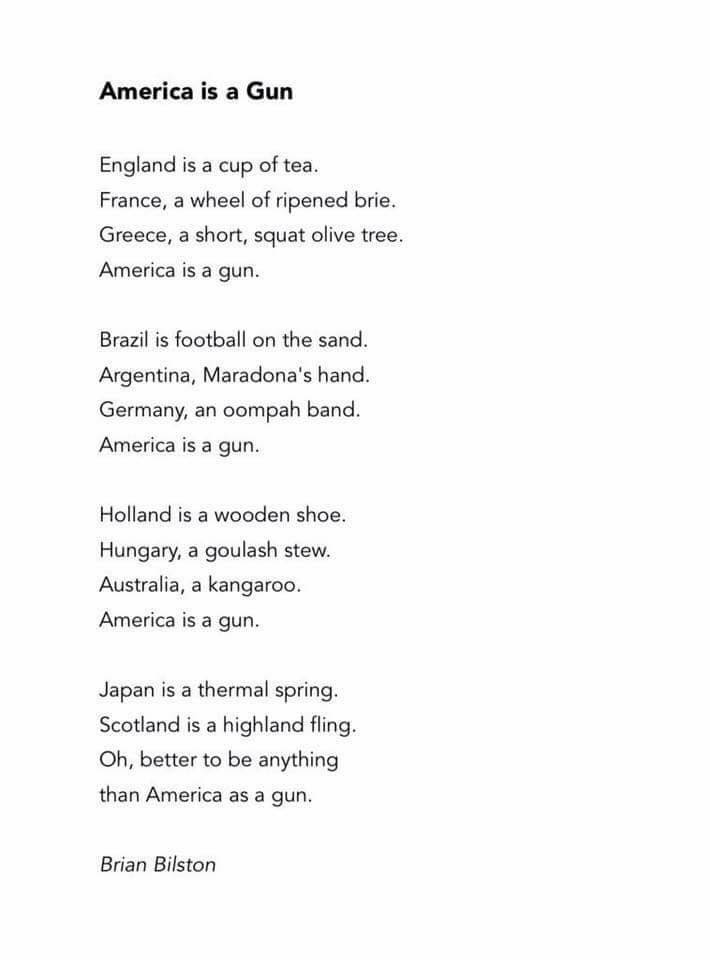
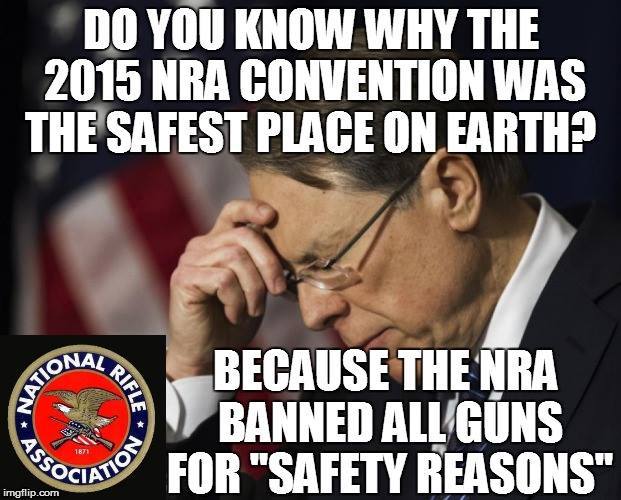
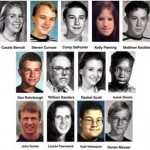

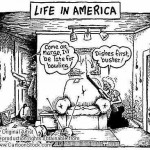

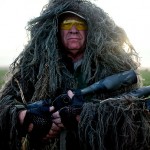
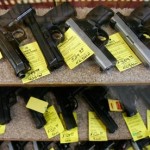
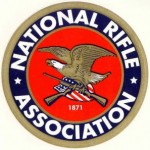
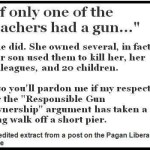

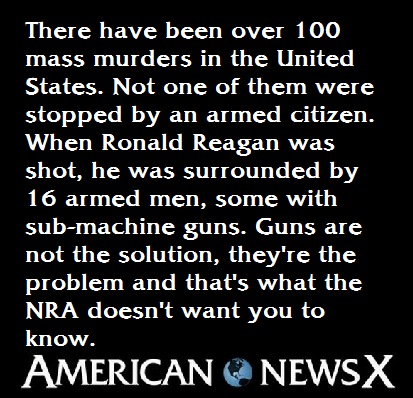



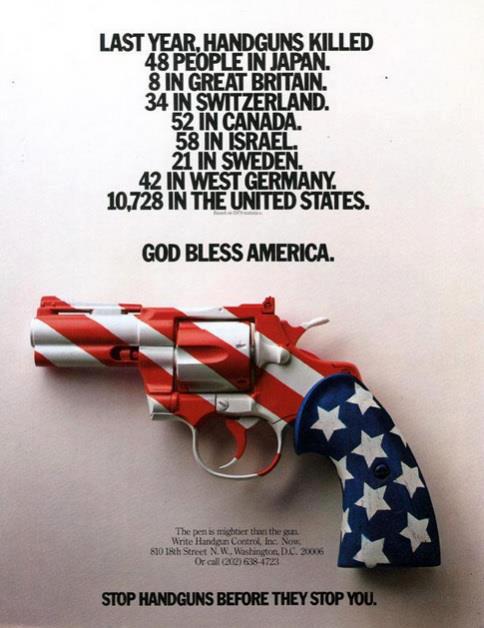


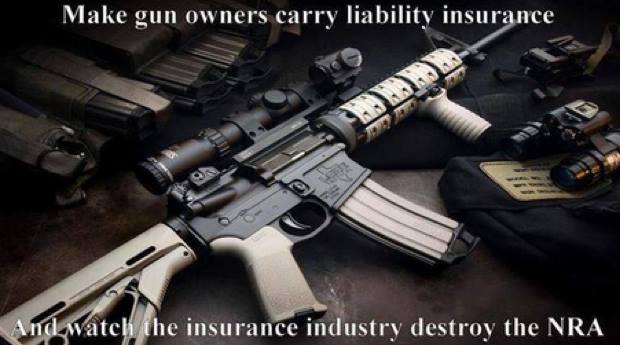
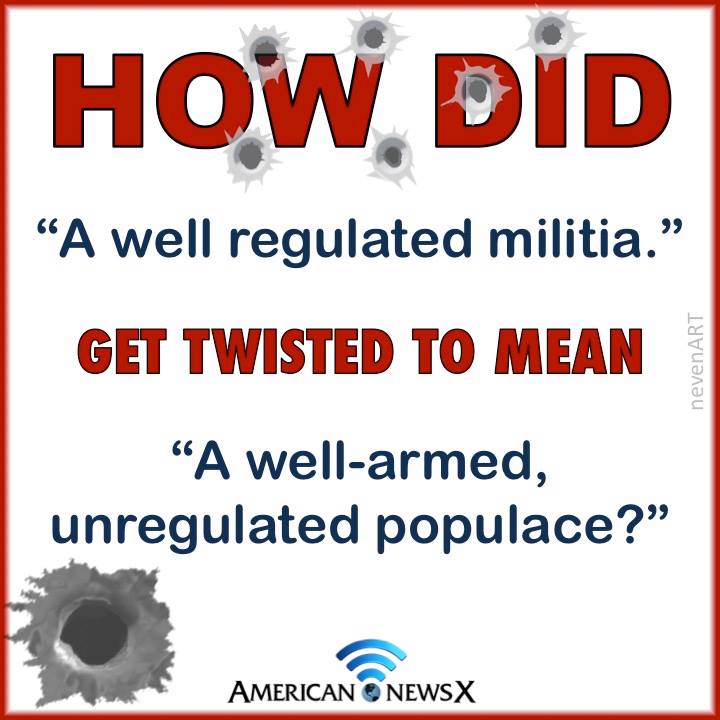
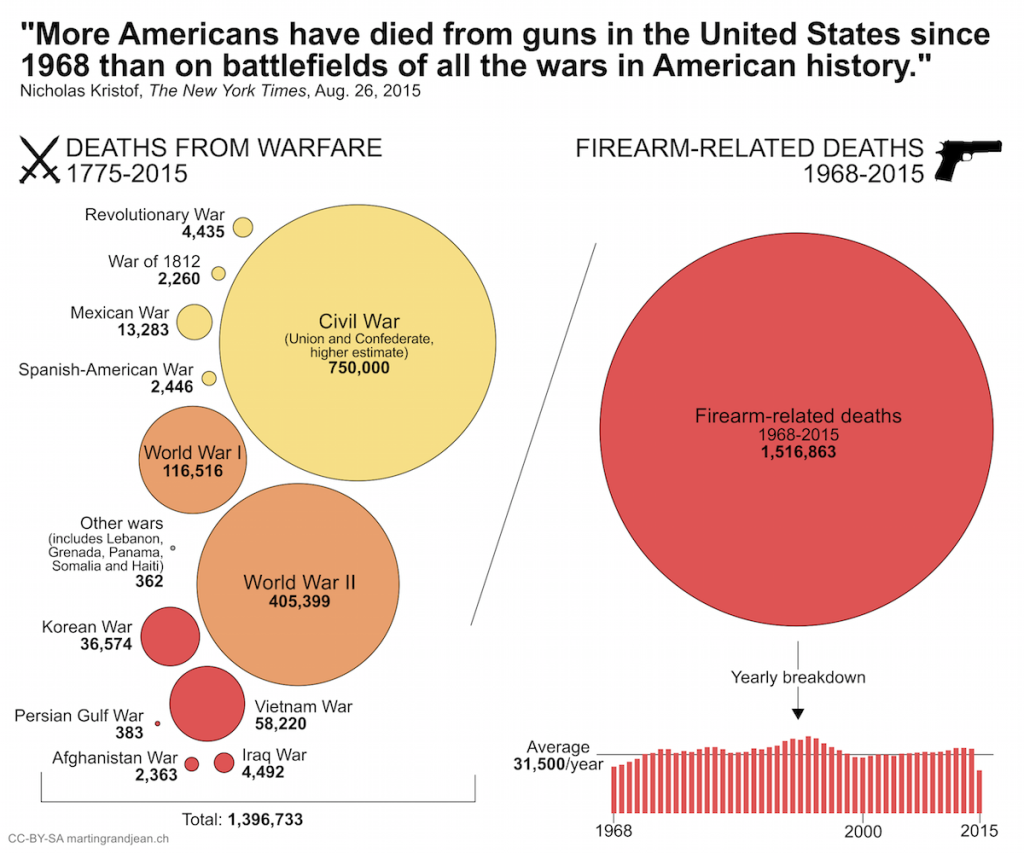

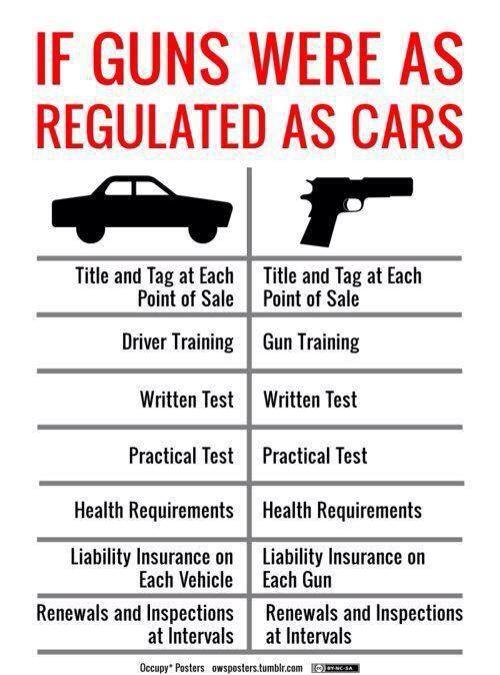





















Wow !!!! I’m sure you have been in my head and read my thoughts !!